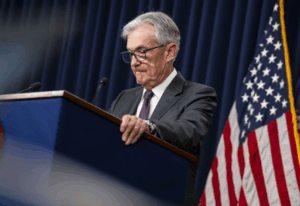Key Points
- It seems likely that housing starts have fallen to pandemic levels in May 2025, driven by high costs and fading demand.
- Research suggests builders are facing challenges from elevated mortgage rates and economic uncertainty, with a notable drop in multifamily construction.
- There is some controversy, as builder sentiment is at its lowest since 2022, with differing views on the impact of high costs versus market demand.
Background
Housing starts, which measure the number of new residential construction projects begun, have significantly declined, reaching levels last seen during the pandemic. This drop is primarily linked to high construction costs and reduced demand, affecting builders across the U.S.
Current Situation
In May 2025, housing starts decreased by 9.8% from April, with an annualized rate of about 1.25 to 1.26 million units, marking a five-year low. This decline is particularly evident in multifamily construction, while single-family starts have also slowed. High mortgage rates, currently at 6.84%, and economic uncertainty are key factors, with builder sentiment at its lowest since 2022.
Implications
The evidence leans toward a challenging environment for builders, with high financing costs and shelter inflation at 3.9% adding pressure. Housing inventories are at their highest since November 2019, potentially deterring new projects, and there is an ongoing affordable housing shortage, estimated between 1.5 million and 5.5 million units.
Comprehensive Analysis
Recent data indicates a significant slowdown in the U.S. housing market, with housing starts falling to levels not seen since the pandemic, particularly highlighted by the sharp decline in May 2025. This report delves into the details, exploring the factors contributing to this trend and its broader implications, drawing from recent news reports and economic indicators.
Housing Starts Decline
Housing starts, a key indicator of residential construction activity, dropped by 9.8% from April to May 2025, according to government figures reported by The Hill and Bloomberg. The annualized rate for May 2025 is approximately 1.25 to 1.26 million units, a pace that represents a five-year low, down from 1.39 million units in April and 4.6% lower than May 2024’s 1.4 million units. This decline is particularly concentrated in multifamily construction, with single-family starts also showing a slowdown, as noted in various reports.
Driving Factors
The evidence suggests that high construction costs and fading demand are primary drivers behind this decline. Builders are contending with elevated inventory levels, currently at their highest since November 2019, which may deter new projects, as per The Hill. High mortgage rates, at 6.84% for a 30-year fixed rate compared to pre-pandemic levels of about 3.5%, are making homeownership less affordable, reducing demand. This is compounded by economic uncertainty and high financing costs, as mentioned in FXStreet.
Builder sentiment has soured, reaching its lowest level since 2022, with 37% of builders cutting prices to stimulate demand, according to a survey by the National Association of Home Builders (NAHB) reported in Real Estate News. The NAHB is forecasting a decline in single-family starts for 2025, reflecting ongoing challenges.
Economic Context
Economic indicators further illustrate the pressures on the housing market. CPI inflation is at 2.4%, with shelter inflation at 3.9%, adding to cost pressures, as detailed in The Hill. High financing costs and economic uncertainty are pulling back residential construction, with new building permits also dropping by 2% from April to May 2025, signaling slowing activity ahead, per FXStreet.
Despite the decline in starts, housing completions increased by 5.4% from April to May 2025, though they are down 2.2% year-over-year, indicating a lag in the completion of previously started projects, as reported by The Hill.
Affordable Housing Shortage
The ongoing affordable housing shortage is a significant concern, with varying estimates highlighting the scale of the issue. The NAHB estimates a shortage of 1.5 million units (from 2021 data), while Freddie Mac and the National Association of Realtors (NAR) estimate 3.8 million and 5.5 million units, respectively, as noted in The Hill. This shortage complicates market dynamics, adding pressure on builders to meet demand amidst high costs.
Market and Builder Response
Builders are responding to these challenges by cutting prices, with 37% reported to be doing so, according to Real Estate News. However, the overall sentiment remains low, with the NAHB forecasting further declines in single-family starts for 2025, reflecting the difficulty in balancing cost and demand.
Detailed Economic Indicators
To provide a clearer picture, here is a table summarizing key economic projections and recent data for May 2025 compared to previous periods:
| Indicator | May 2025 Value | April 2025 Value | May 2024 Value | Notes |
|---|---|---|---|---|
| Housing Starts (Annualized Rate) | 1.25-1.26M units | 1.39M units | 1.4M units | Five-year low, down 9.8% month-over-month |
| New Building Permits | -2% from April | N/A | N/A | Indicates slowing activity |
| Housing Completions | +5.4% from April | N/A | -2.2% year-over-year | Lag in completions |
| 30-Year Mortgage Rate | 6.84% | N/A | N/A | Compared to pre-pandemic ~3.5% |
| CPI Inflation (Annual) | 2.4% | N/A | N/A | – |
| Shelter Inflation | 3.9% | N/A | N/A | Contributing to cost pressures |
| Housing Inventories | Highest since Nov 2019 | N/A | N/A | May deter new construction |
This table, derived from reports by The Hill, Bloomberg, and FXStreet, illustrates the current state and challenges in the housing market.
Conclusion
The housing market is experiencing a significant slowdown, with housing starts falling to pandemic-era levels due to high costs, fading demand, and economic uncertainty. Builders are faltering under these pressures, particularly in multifamily construction, with high mortgage rates and shelter inflation exacerbating the situation. The ongoing affordable housing shortage adds complexity, and while some builders are cutting prices, the overall outlook remains challenging, with forecasts of further declines in single-family starts for 2025.
Key Citations
- Housing starts drop to lowest level since pandemic
- US Housing Starts Slide to Five-Year Low on Apartment Projects
- Housing starts and permits plunge in May
- Builder sentiment sours heading into summer
網頁



+ There are no comments
Add yours